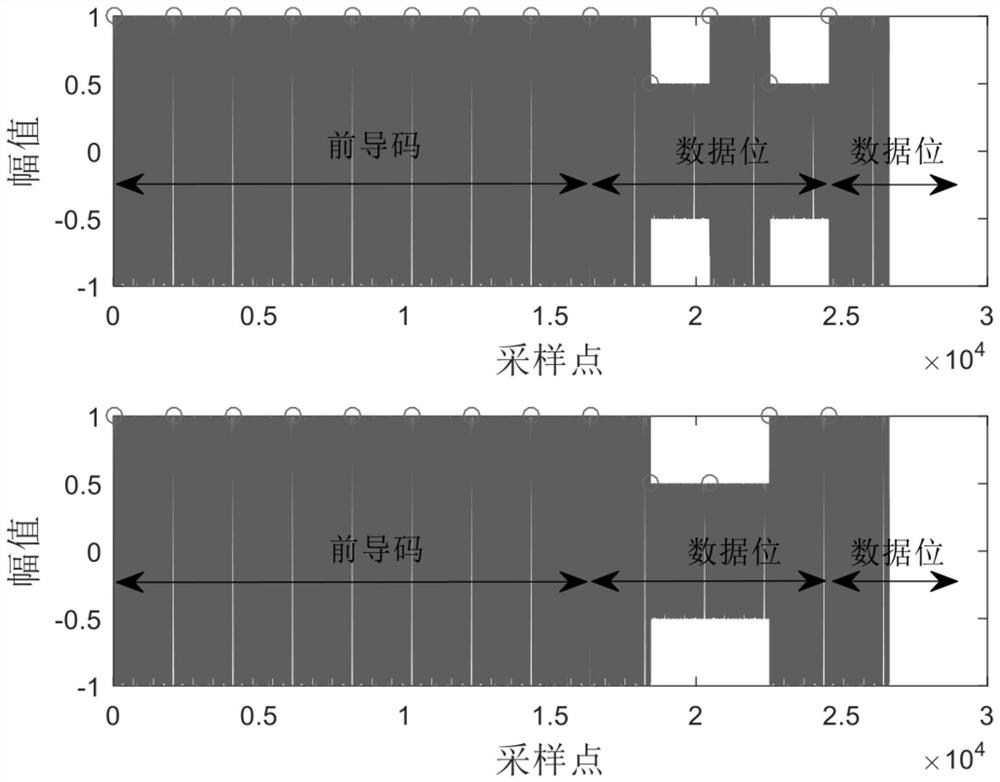Distributed MU-MIMO channel estimation algorithm and transmission method in LoRa uplink system
A channel estimation and distributed technology, applied in channel estimation, baseband systems, transmission systems, etc., to reduce transmission errors and improve robustness
- Summary
- Abstract
- Description
- Claims
- Application Information
AI Technical Summary
Problems solved by technology
Method used
Image
Examples
Embodiment 1
[0107] This embodiment provides a distributed MU-MIMO channel estimation algorithm in a LoRa uplink system, such as figure 1 shown, including the following steps:
[0108] Step 1, when the signal y transmitted by K nodes arrives at the receiving end at the same time, since the K nodes are all new nodes joining the system, there are K·R channels h ji Unknown; transmitting 1 symbol will generate K R unknowns and R equations, so the encoding matrix used is at least K+1 order;
[0109] Among them, in the first equation of the R equations, the data received by the first receiving antenna is:
[0110] the y 1 (n') = h 11 the s 1 (n′)+…+h 1i the s K (n') Formula 12;
[0111] In other equations in the R equations, the expression of the data received by the receiving antenna is deduced in turn on the basis of formula 12;
[0112] j represents the jth receiving antenna;
[0113] i represents the i-th node;
[0114] h ji Indicates the channel from the i-th node to the j-th rec...
Embodiment 2
[0149] This embodiment provides a multi-node MU-MIMO transmission method in a LoRa uplink system, such as figure 2 shown, including the following steps:
[0150] Step 1, using multiple nodes to send signals to the gateway, the signals of different nodes are transmitted through the Rayleigh fading channel, and all signals and noise are combined to reach the receiving antenna;
[0151] Step 2, for the signal obtained in step 1, it is first necessary to detect the preamble;
[0152] The preamble is the basis for detecting the signal at the receiving end. After the preamble is detected, the channel estimation can be performed. Therefore, detecting the preamble is a prerequisite for LoRa to enable MU-MIMO;
[0153] Step 3, the receiving end performs distributed MU-MIMO channel estimation to obtain channel information;
[0154] The method for the distributed MU-MIMO channel estimation adopts the distributed MU-MIMO channel estimation algorithm in the LoRa uplink system in embodimen...
PUM
 Login to View More
Login to View More Abstract
Description
Claims
Application Information
 Login to View More
Login to View More - Generate Ideas
- Intellectual Property
- Life Sciences
- Materials
- Tech Scout
- Unparalleled Data Quality
- Higher Quality Content
- 60% Fewer Hallucinations
Browse by: Latest US Patents, China's latest patents, Technical Efficacy Thesaurus, Application Domain, Technology Topic, Popular Technical Reports.
© 2025 PatSnap. All rights reserved.Legal|Privacy policy|Modern Slavery Act Transparency Statement|Sitemap|About US| Contact US: help@patsnap.com



